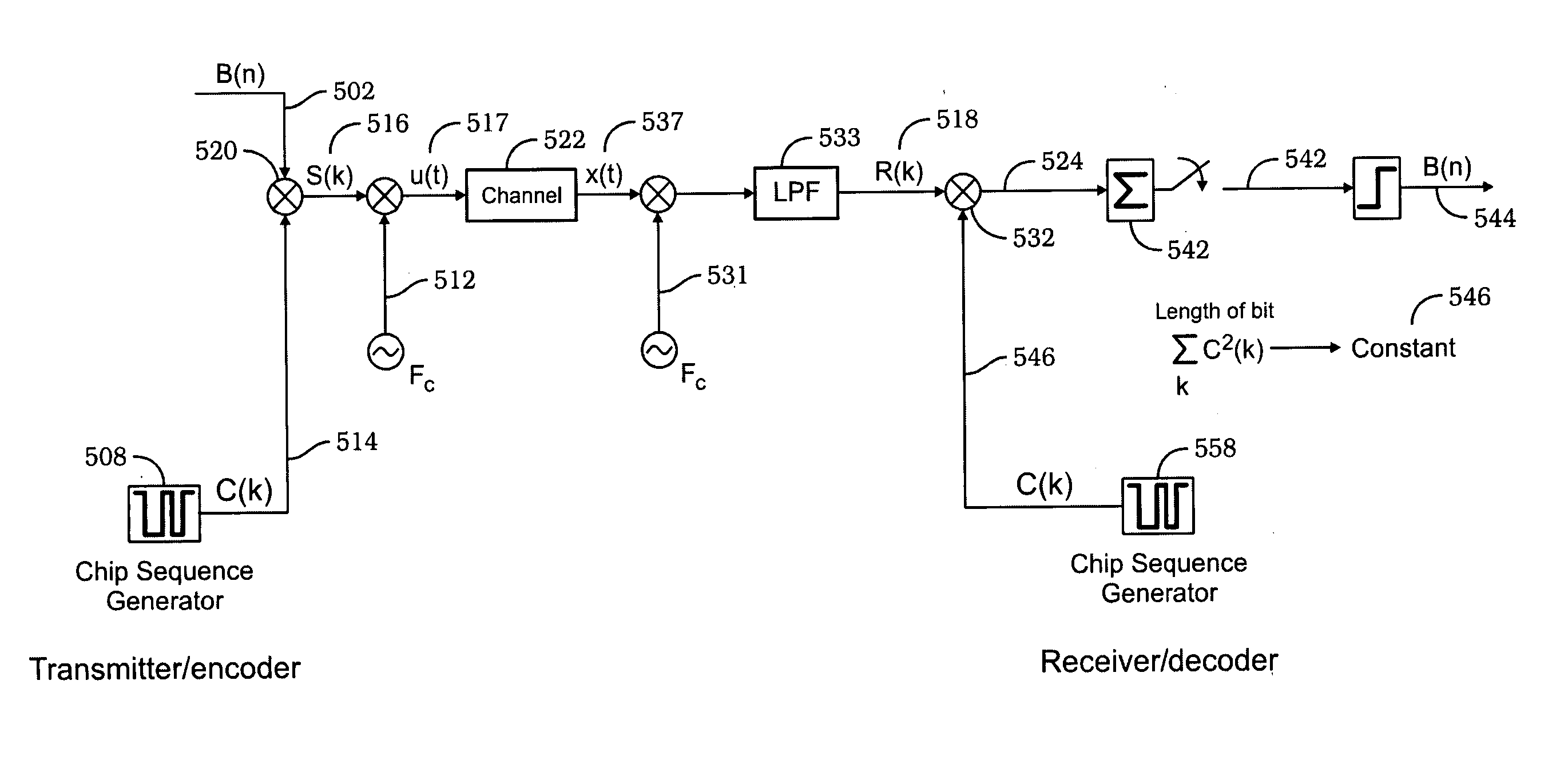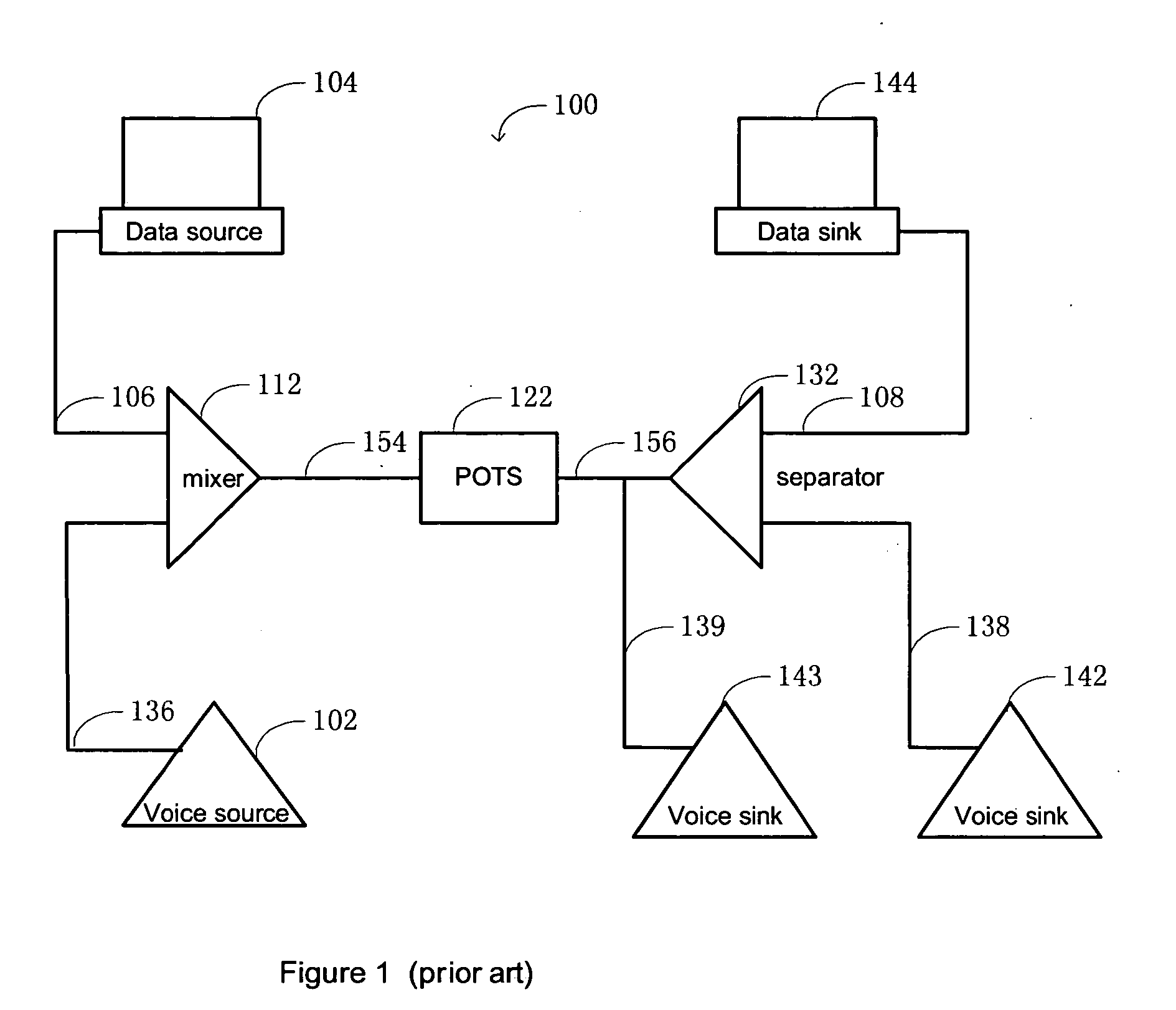Voice interference correction for mixed voice and spread spectrum data signaling
a spread spectrum data and voice interference technology, applied in the field of mixed voice interference correction, can solve the problems of large distance limitation of dsl technology, insufficient signal to noise ratio (snr) to be properly decoded at the receiver, and inability to decode carrier signals properly, so as to avoid data errors, reduce data error rate, and increase total energy
- Summary
- Abstract
- Description
- Claims
- Application Information
AI Technical Summary
Benefits of technology
Problems solved by technology
Method used
Image
Examples
Embodiment Construction
[0028] For most systems using audio signals to carry digital data, the following are some desirable properties and capabilities: 1) to share data across an audio channel, such as a POTS network, radio broadcast or music CD, 2) to make the noise associated with the additional data be below a perceptible level; 3) to make the system multi-user capable; and 4) to share the data reliably with low or no errors due to transmission or encoding / decoding.
[0029] It is found that one way to lower perceptibility of the noise associated with the additional data in the audio signal is to use spread spectrum. The spread spectrum method has been used in many other applications. It is generally regarded as robust against jamming and interference. It can be hidden and masked due to the low amplitude at any given frequency, and it is robust such that even if many channels are impaired, the overall signal can still go through. The spread spectrum can naturally support multi-user implementation, for ex...
PUM
 Login to View More
Login to View More Abstract
Description
Claims
Application Information
 Login to View More
Login to View More - R&D
- Intellectual Property
- Life Sciences
- Materials
- Tech Scout
- Unparalleled Data Quality
- Higher Quality Content
- 60% Fewer Hallucinations
Browse by: Latest US Patents, China's latest patents, Technical Efficacy Thesaurus, Application Domain, Technology Topic, Popular Technical Reports.
© 2025 PatSnap. All rights reserved.Legal|Privacy policy|Modern Slavery Act Transparency Statement|Sitemap|About US| Contact US: help@patsnap.com



